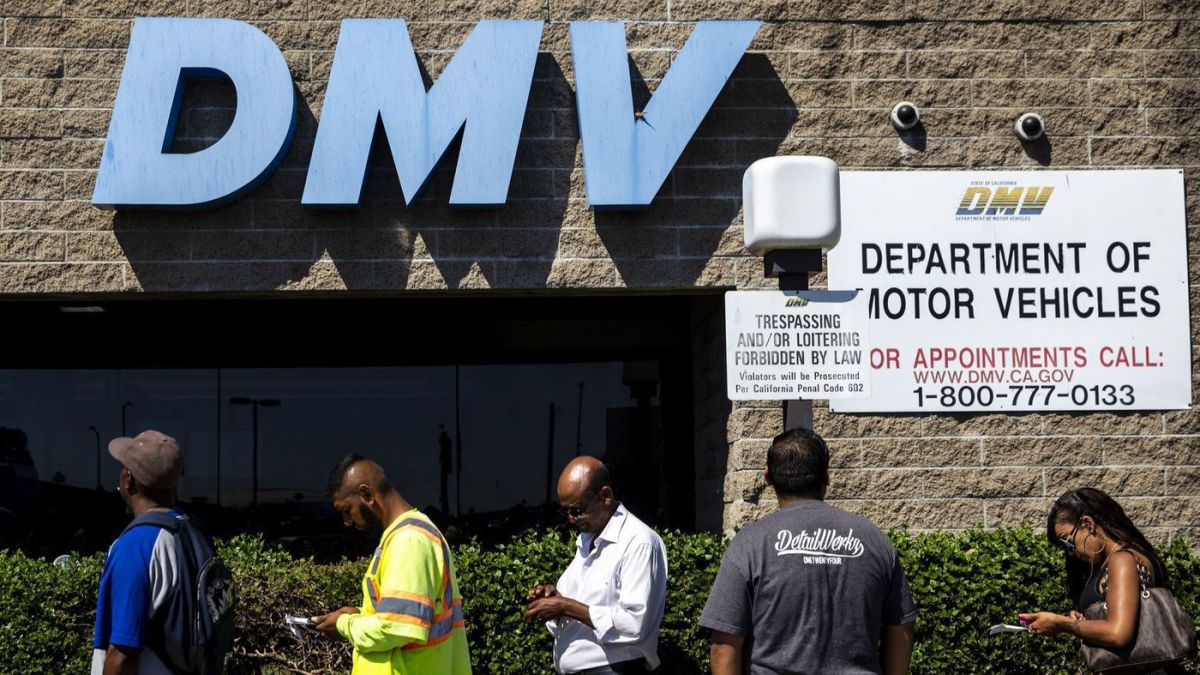
Why should anyone have to endure this experience for a job that doesn't require driving?

A review of career portals at a dozen major transit systems in America’s largest cities shows that two-thirds require driver’s licenses for jobs that do not require driving. This is especially true for so-called “front-line” positions, or jobs outside of the central administrative office, but applies across the board. For instance, San Francisco’s MTA “Planner,” New York’s MTA “Associate, Operations Analyst,” and Houston’s Metro “Electronic Farebox Technician” job openings all require driver’s licenses.
Why do agencies whose mission it is to provide alternatives to driving limit job access for applicants who don’t drive? Transit agencies across the country are experiencing widespread hiring difficulties, yet they continue to winnow applicant pools through an arbitrary requirement that seem to directly contradict their own goals. Some defend the practice on grounds that valid licenses may signal responsibility to employers. But what are the consequences of using a driver’s license as a proxy for employability?
The percentage of Americans with a driver’s license has been dropping for every age bracket under 70 for decades. Young adults and people of color are leading the trend. Between 1983 and 2014, every age bracket below 34 years old saw a double digit drop in driver’s licenses. People of color in all age brackets are less likely to have a driver’s license. According to the Employment and Training Institute, while 75% of white 18-year-olds had driver’s licenses, only 34% of African Americans and 33% of Hispanic 18-year-olds held one.
People with low incomes may also be disproportionately burdened by this requirement. Many states suspend driver’s licenses from those who fail to pay fines, even for infractions as small as broken tail light violations. Lack of disposable income is the top-cited reason for failing to pay fines on time. A recent study found “that rates of license suspensions from failing to pay fines or appear in court were strongly correlated with poverty indicators. Similar correlations were found across racial groups. Of California ZIP codes where Black Americans account for more than a fifth of the population, 95 percent recorded license suspension rates exceeding the state average.” Texas alone has 1.8 million suspended driver’s licenses at any point and in California over 17% of the state’s adult population has a suspended license.
Eliminating a driver’s license requirement for jobs that do not require driving would make it easier for transit agencies to enlist staff from a wide range of backgrounds. Hiring people who ride transit may also make staff more personally invested in building good transit.
In our discussions with Human Resources Managers at transit agencies across the country, some readily acknowledged that they are looking to move away from the requirement. One HR manager whose organization eliminated the requirement was surprised to hear that other agencies still maintain these requirements. Concerns were raised internally at his agency years ago about the potential of lawsuits on discrimination grounds. “As long as we make clear our expectations and that the job entails several different sites around the city, why would it matter if the new hire gets to them by car, transit, Uber, or even if a friend drives them?” he asked.
Indeed.
 On the Brink: Will WMATA’s Progress Be Erased by 2024?
On the Brink: Will WMATA’s Progress Be Erased by 2024?
The experience of being a WMATA rider has substantially improved over the last 18 months, thanks to changes the agency has made like adding off-peak service and simplifying fares. Things are about to get even better with the launch of all-door boarding later this fall, overnight bus service on some lines starting in December, and an ambitious plan to redesign the Metrobus network. But all of this could go away by July 1, 2024.
Read More New TransitCenter Report: To Solve Workforce Challenges Once and For All, Transit Agencies Must Put People First
New TransitCenter Report: To Solve Workforce Challenges Once and For All, Transit Agencies Must Put People First
TransitCenter’s new report, “People First” examines the current challenges facing public sector human resources that limit hiring and retention, and outlines potential solutions to rethink this critical agency function.
Read More